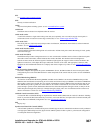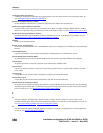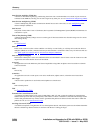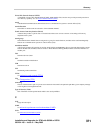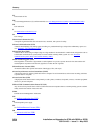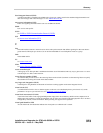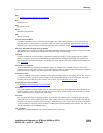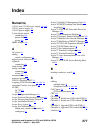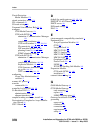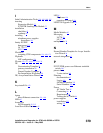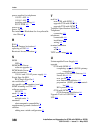
Glossary:
Installation and Upgrades for G700 with S8300 or S8700
555-234-100 — Issue 3 — May 2003
375
WBS
See DEFINITY Wireless Business System (DWBS)
.
WCC
World-class core
WCR
World-class routing
WCTD
World-class tone detection
WFB
Wireless fixed base
wide area network (WAN)
A computer network that spans a relatively large geographic area. A WAN usually consists of two or more local area
networks (LANs). Computers that are connected to a WAN are often connected through public networks, such as the
telephone system. They can also be connected through leased lines or satellites. See also
local area network (LAN).
Wide Area Telecommunications Service (WATS)
A discounted toll service that is provided by long distance telephone companies and local telephone companies in the US.
With WATS, calls to certain areas are charged a flat rate that is based on expected usage.
wideband
A circuit-switched call at a data rate that is greater than 64 kilobits per second. A circuit-switched call on a single T1
facility or a single E1 facility with a bandwidth between 128 kilobits per second and 1536 kilobits per second (T1) or
1984 kilobits per second (E1) in multiples of 64 kilobits per second. H0, H11, H12, and N x DS0 calls are wideband. See
also narrowband
.
wideband access endpoint
Access endpoints that are extended with wideband switching. A wideband access endpoint consists of one or more
contiguous DS0s on a line-side T1 facility or a line-side E1 facility, and has an extension. The Administered Connections
feature provides call control for calls that originate from wideband access endpoints.
wink-start tie trunk
A trunk on which the system makes a connection with a distant switching system for an outgoing call, and then waits for
a momentary signal or wink before sending the digits of the called number. Similarly, on an incoming call, the system
sends the wink signal when the system is ready to receive digits. See also immediate-start tie trunk
.
Wireless Business System (WBS)
See DEFINITY Wireless Business System (DWBS)
.
work mode
One of four conditions in which an ACD agent can work. When an agent logs in, the agent enters AUX-Work mode. To
become available to receive ACD calls, the agent enters auto-in mode or manual-in mode. To do work that is associated
with a completed ACD call, an agent enters ACW mode.
work state
One of eight conditions that an ACD agent exhibits for each of the three different splits to which the agent can belong.
Valid work states are Avail, Unstaffed, AUX-Work, ACW, ACD (answering an ACD call), ExtIn, ExtOut, and OtherSpl.
An agent’s work state for a particular split can change for different reasons, such as when a call is answered or abandoned,
or the agent changes work modes. The Avaya Basic Call Management System (BCMS) feature monitors work states, and
uses this information to provide BCMS reports.
write operation
The process of putting information onto a storage medium such as a hard disk.



